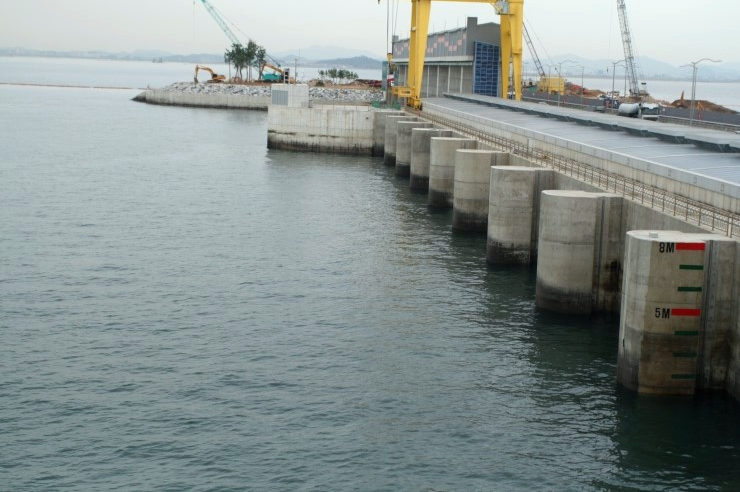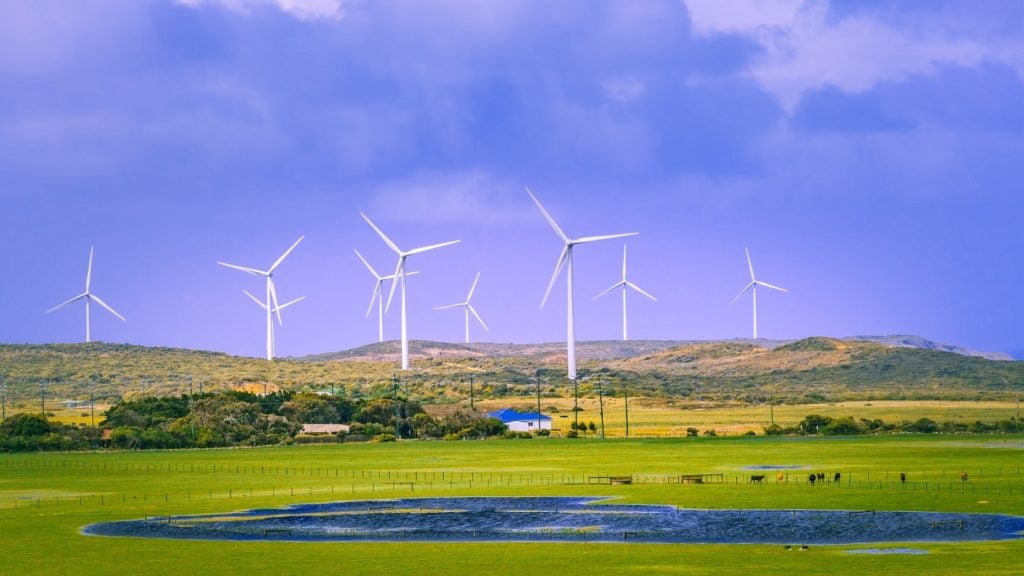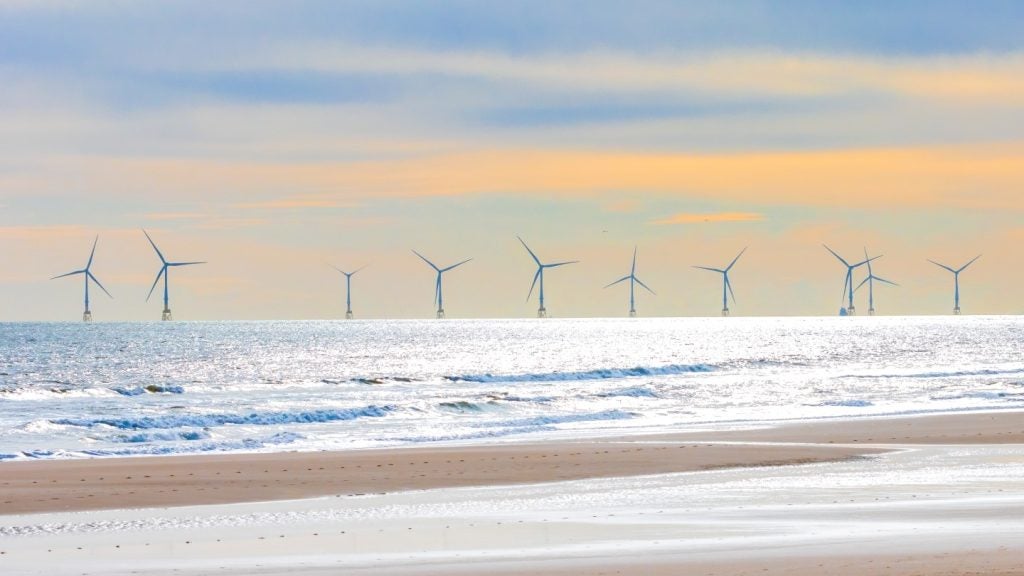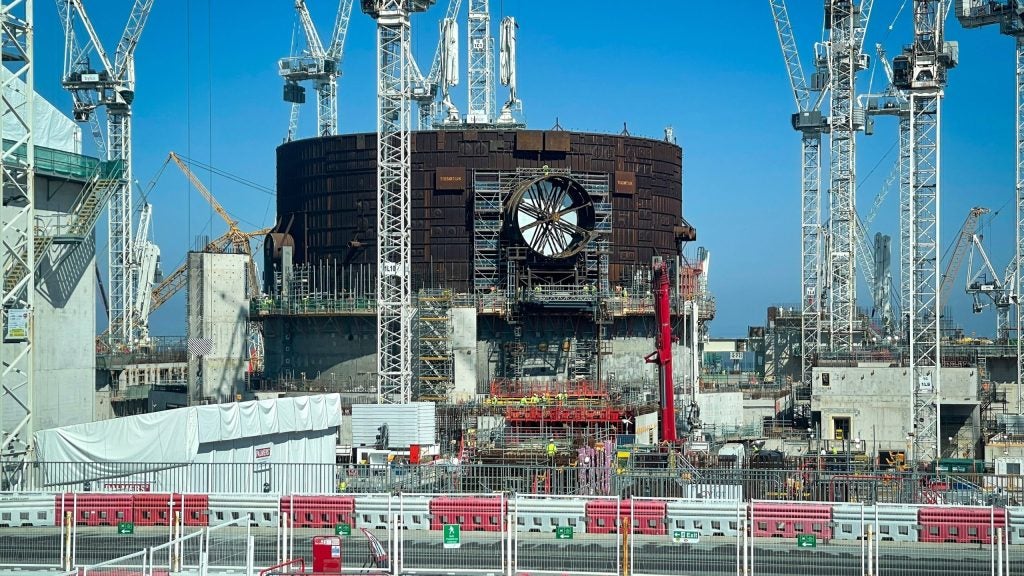
Tidal energy has been consistently cited for its energy potential. In the UK for example, it has been suggested that tidal could make up as much as 12% of the country’s energy mix.
However, when compared to other renewables such as wind and solar, tidal is expensive, leading many to proclaim it is not worth pursuing. For example, it was estimated that tidal energy in Canada would cost CAD$0.66 per kwh compared to offshore wind at $0.20-30.
But do the benefits of tidal outweigh the cost concerns? Power-technology.com looks at five tidal farms around the world.
Sihwa tidal power station, South Korea
The Sihwa tidal power station is the largest and most expensive tidal installation in the world, with an installed capacity of 254MW and according to IRENA cost $298m to build in 2011.
The cost per kilowatt hour (kwh) of the plant is worked out by multiplying the construction cost and the capacity. As such, it has been estimated that Sihwa cost $117 per kwh, while it produces electricity at $0.02 per kwh. It is formed of 10 generators, which produce a total energy capacity of over 550GWh annually.
South Korea had previously built a small tidal power farm at Uldomok (1.5MW) at a cost of $10m in 2009, with expansion to 90MW planned. Other larger projects at Incheon Bay (1320MW) and Garorim (520MW) have also been considered.
How well do you really know your competitors?
Access the most comprehensive Company Profiles on the market, powered by GlobalData. Save hours of research. Gain competitive edge.

Thank you!
Your download email will arrive shortly
Not ready to buy yet? Download a free sample
We are confident about the unique quality of our Company Profiles. However, we want you to make the most beneficial decision for your business, so we offer a free sample that you can download by submitting the below form
By GlobalDataLa Rance tidal power station, France
La Rance tidal power station is the oldest tidal power station and the first producer of renewable energy in Europe, built in 1966. La Rance is an important example as it is the oldest tidal power station in the world, and at 53 this year it is still a reliable source of power with no end date in sight. As such it proves that tidal has a very long life expectancy, while wind turbines for example currently only last for around 20 years.
La Rance cost $115m and the time of construction, which adjusted for inflation is $918m in 2019 and has a capacity of 240MW. The farm cost $382 per kwh and produces electricity at a range from $0.04 to $0.12 per kwh.
Despite suggestions that France could overtake the UK as Europe’s leader in tidal energy, France has not added to the La Rance tidal farm, expanding its nuclear energy efforts instead.
Annapolis Royal Generating Station, Canada
The Annapolis Royal Generating Station on the Bay of Fundy, Nova Scotia, is the third largest tidal farm in the world, but has a much smaller capacity of the previous tidal stations producing just 20MW.
Construction began in 1980 and it began producing energy in 1984. It currently produces 50GWh annually, enough to power 4,500 homes. Similar to the Sihwa farm, Annapolis is built on a pre-existing causeway from the 1960s, allowing the local community to benefit from structures that may have otherwise been wasted.
The local government of Nova Scotia has stated its hopes to increase tidal power capacity to 300MW by 2020 with projects in the Bay of Fundy.
Jiangxia tidal power station, China
Jiangxia tidal power station was the first tidal power station in Asia. Located in the East China Sea outside the city of Wenling, Jiangxia first produced energy in 1980.
Initially it had a capacity of 3.2MW formed of five generators. A sixth 700kW generator was added in 2007 and an older generator was upgraded by 200kW in 2014, taking total capacity to 4.1MW. The project highlights the ease with which tidal power stations can be retrofitted, further adding to the longevity of the technology.
The station produces about 6.5GWh of electricity each year. While this is much smaller than the previous stations it has been able to constantly produce energy for nearly 40 years, as such providing great value.
Kislaya Guba tidal power, Russia
The fifth largest tidal power station is Kislaya Guba tidal power station in the Barents Sea, northern Russia. Built during the Soviet Union era in 1968, the station has a total capacity of 1.7MW.
The plant was originally built with French technology and had a capacity of 0.4MW, but after being closed for a decade it was re-opened in 2004 with new equipment which increased it to its current capacity.
It is clear therefore that there has already been huge developments in the technology, although this has, as yet, happened relatively slowly. This is generally thought to be because of a lack of investment, but it is predicted to become commercially profitable within 2020. This is thanks to the larger scale of projects along with technological advancements.
The Russian government has looked to establish further tidal projects totalling over 100GW, including the possibility of a huge 87GW project at Penzhin Bay in the sea of Okhotsk.






